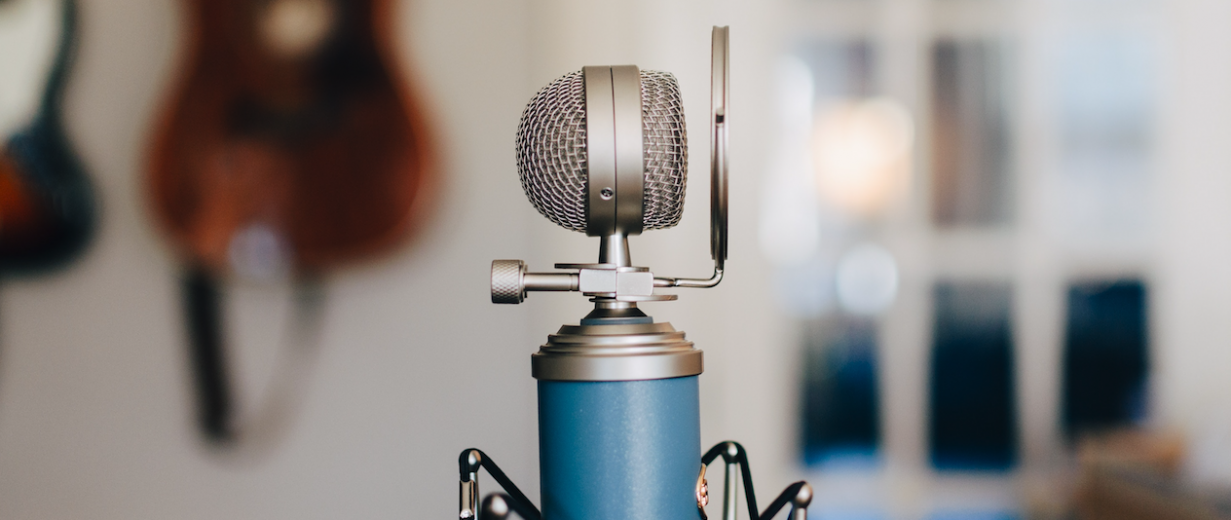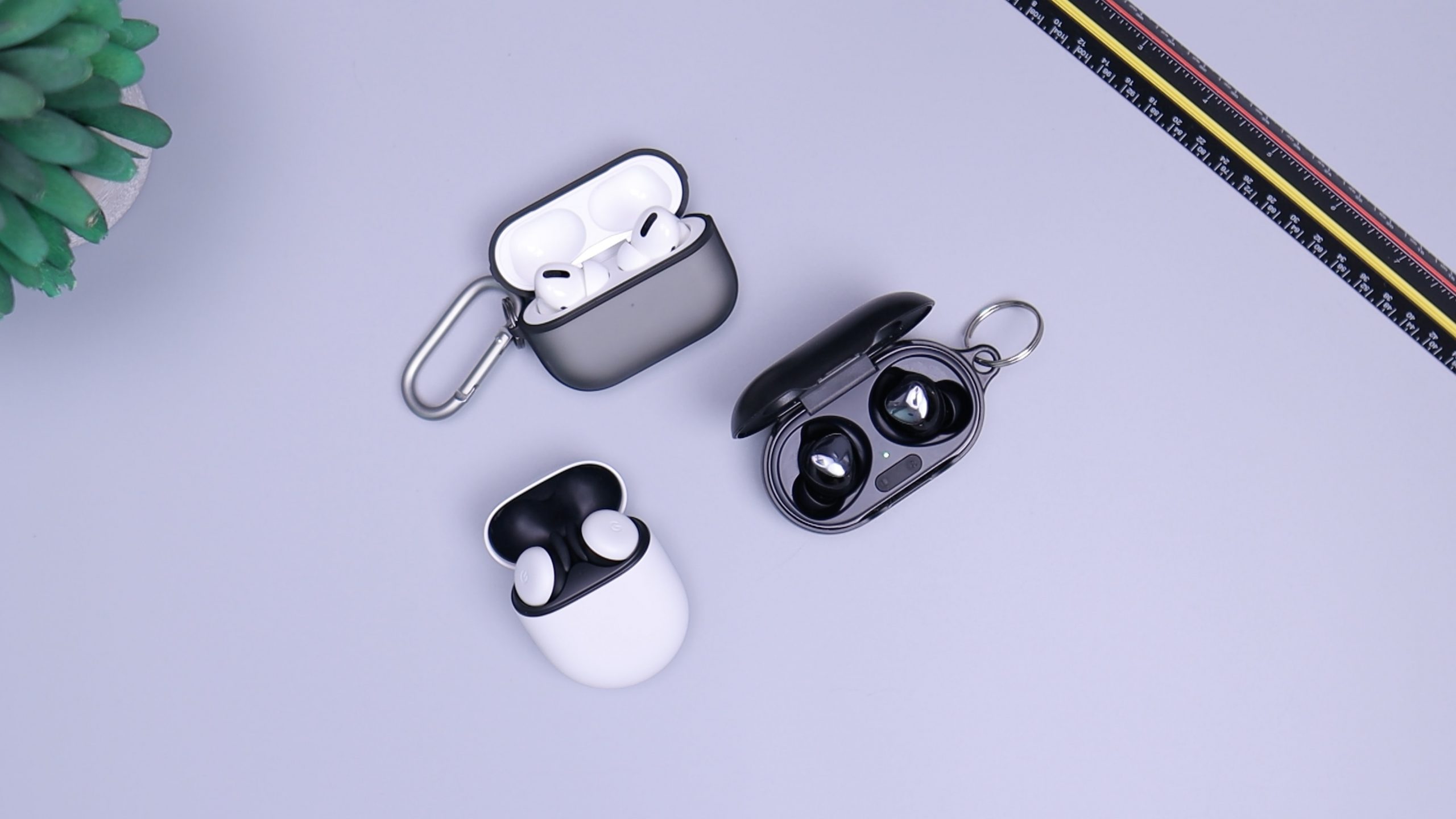The content landscape is a crowded one. But we already know that.
As marketers and content creators, it’s our job to help audiences wade through the free-for-all that is today’s internet. We need to rise to the demands of customized experiences to deliver only the most relevant, necessary content.
However, ‘what’ is only part of the personalization puzzle; the ‘how’ and the ‘when’ is just as important.
Content consumers are moving to a medium that can shift with them throughout their day and be utilized anywhere, anytime, hands-free. That format, of course, is audio.
Audio has the ability to connect with listeners at times that weren’t previously possible, such as at work, during commutes, or while at the gym. The ability to reach audiences through audio during content ‘blackout’ hours is huge, offering the opportunity to reach new people or gain additional traction with existing followers. (Heidi Cohen)
Aside from audio’s versatility and portability, there’s also the fact that people just like listening.
With the average American spending a whopping 16+ hours per week consuming audio, if you’re not adding audio into your content strategy, you’re running the risk of being left behind.
From long-form to short-form, from creating new content to repurposing existing material, here are 7 ways you can start leveraging audio to increase engagement, accessibility, and adoption of your brand.
1. Audiofy existing content
While the idea of introducing a new content medium into your strategy may seem overwhelming, an easy place to start is in your published content archives. Consider adapting both written and video content into an audio format.
Doing so can help with:
- Accessibility — publishing your content across several mediums will make your content more available to those with physical and learning disabilities. Consider recording narrations of your written pieces to be embedded alongside the original content, or turning YouTube and Vimeo videos into audio only files for posting across non-video platforms
- Portability — Busy schedules call for content that is multitasking friendly. Though someone may not have the time to read posts or watch videos, tuning into your content via a podcast or audio clip can be done while on-the-go
- Relatability — Written text can be moving, but nothing connects more to the core of who we are as people than the sound of the human voice. For brands looking for a way to communicate on a more personal level, providing a vocal delivery of a human interest piece, or a personal anecdote will help you connect more deeply with your audience
You already have tons of quality, on message content — use it!
2. Pull from/curate outside content
Utilizing existing content is a great idea; however, if the financial or technical resources aren’t available, the use of outside content is also a solid way to introduce audio into the mix.
If there’s one person on the internet who does content right, it’s Rachel Miller. While you may know Miller from her work at Buzzfeed, she’s also published a book and has another on the way.
The way I know Rachel’s work, however, is through her blog.
There have been several blog iterations over the years, but Miller’s current blog focuses on “shar[ing] practical, doable tips for taking care of yourself, your home, and your people.”
While my biggest love is her weekly link roundup, her site’s monthly ‘Just Good Bops’ series, written by the blog’s designer Kiyana Salkeld, is an excellent example of how curated audio might fit into your audio strategy.
Once a month Salkeld handpicks a playlist of songs to go with the month at hand and publishes it on Spotify.
Then she blogs about her choices, utilizing the Spotify embedded player to embed the audio directly into the post:
The song and artist choices are diverse and on brand with the type of sound that Miller’s audience (i.e. me) would likely be attracted to.
It’s delightful.
If music isn’t the right approach for you, Audioburst has the spoken word equivalent to Spotify’s playlist and player functionality. Audioburst Studio allows website owners and app developers to select from 14 expertly crafted playlists.

In addition, Audioburst offers the option to customize your own playlist from over 100+ categories and topics, allowing you to dial-down to the specific interests of your followers.

Once you have an expertly crafted spoken-audio playlist, it’ll be time to….
3. Add an audio player to your site
Adding an embedded audio player to your website is hardly a novel idea; however, they have come a long way since the days of looping midi files on Geocities sites and spending hours picking the featured track for your MySpace page.
Back in the internet days of yore, we essentially foisted our audio tastes on others without taking their preferences into consideration.
Nowadays offering audio on-page or in-app has a lot more to do with what value you’re bringing to your audience:
- Is it something they can’t get anywhere else?
- Will it increase user engagement?
- Does its implementation add to or take away from the overall user experience?
- Is it personalized to fit your users’ preferences?
If done right, adding audio can give your users that little something extra that will encourage them to stay a few minutes longer or even be the tipping point between your site/app over another.
For instance, take another look at the example above. I remembered seeing May’s ‘Just Good Bops’ post when it went live a few weeks ago. I didn’t check it out then, but when drafting this piece, I remembered and took a listen. I ended up leaving the embedded player running in a tab while writing, and then moved on to Spotify proper so I could favorite it for later use.
If there had just been a link to the playlist on Spotify, it’s unlikely I would’ve taken the time to check it out, but with it right there on page, I not only listened to the playlist but made a note that when my music rotation needs a refresh, I should look to these monthly posts.
My new love for curated monthly bops aside, you should know that adding an audio player to your site also has other benefits on top of increased user engagement such as giving you a boost in search, something that should interest any content marketer.
Sold? Here are some players you might want to give a whirl:
Music
Podcasts
- Blubrry
- Buzzsprout
- Castbox*
- Libsyn
- Megaphone
- Podbean
- RadioPublic*
- Simplecast
- Spreaker* (Spreaker is a hosting site, but you can listen and embed their players without signing up)
- Transistor
Note: Most of the above players are provided by podcast hosting sites. I’ve notated any that are standalone (i.e. anyone can use them) with an *
Combination
- Audioburst Studio (Podcasts, radio, talk audio)
- iHeartRadio (Radio, music, podcasts)
- Soundcloud (Music, podcasts)
- Spotify (Music, podcasts)
4. Podcast
It may seem like everyone is creating a podcast these days…and spoiler alert, they are. But for good reason:
First, Edison’s Share of the Ear report disclosed that “the share of time spent listening to podcasts among Americans aged 13+ has risen by 122% between 2014 and 2018.”
That. Is. Bananas.
Secondly, Edison also found that when a brand advertises during a podcast, 54% of listeners surveyed revealed that they are more likely to consider the brand.
With an ROI like that, who wouldn’t want to start a podcast?!
There are many examples of branded podcasts, and what’s more, there are even podcasting companies producing them as a service.
Gimlet Creative, the podcasting company’s branded content arm, has partnered with many well-known brands such as Adobe, Lyft, and Squarespace to create quality, brand-relevant content.
However, if partnering with a resource like Gimlet isn’t in your budget, don’t panic — while there is a learning curve to producing a quality podcast, with a little planning, practice, and patience, you too can produce a great show for your brand.
If you’re ready to hop on the podcast train, check out this post for tips on starting your first podcast.
5. Go short form
So now that you (potentially) have started a podcast, you’re going to need to find a way to promote that content.
An interesting way to pique interest in a podcast is by creating short-form snippets — clips that are easily searchable and shareable and can give potential listeners a sneak peek into what you have to offer.
Marketing expert Heidi Cohen notes that:
“It’s 1.6 times more likely people will listen to short-form content in the form of curated news summaries.”
This explains why podcasts such as NPR’s ‘Up First’ are so popular. It’s quick, to the point, and gives you everything you need to know about the world in 10–15 minutes, allowing listeners to tune in while getting dressed or heading off to work.
However, this ability to sneak content into a listener’s routine doesn’t need to be reserved only for news broadcasts. Instead, consider making short-form snippets of podcasts, webinars, or audio narrations of your written articles. Your audience may not have 45 minutes to dedicate to your content, but they may have 5 or 10.
A few minutes may not seem like much, but in today’s busy, hectic world, it’s a lot.
Aside from just creating content specifically tailored to the spare moment, short-form audio can also be used to build anticipation for your longer pieces.
This post from Insiders Radio Network lays out the theory nicely:
“…if you give [listeners] the full meal at once, they’re satisfied and will then look for the next thing that catches their attention so they can ‘feed’ again. But if you give them an appetizer, and learn to drop bread crumbs, they will follow along as long as those bread crumbs keep coming.”
Frankly, it’s just like watching the local news. You’re really only tuning in for the weather report, but if they give that to you right away, you’re going to turn the channel.
So in between each story, you get a little piece of the weather puzzle, keeping you tuned in so that you also wind up seeing the rest of the news segments while waiting for the weekend forecast.
Going short-form will allow you to encourage your audience to get excited for your metaphorical ‘weather report,’ keeping them interested and on-board for the long haul.
(Full disclosure: I live in the Midwest, so if you don’t experience all 4 seasons in one day where you live, you may need to replace the above example with something more relevant to your person… ?♀️ )
How to create short-form snippets:
Audioburst Creators is a free tool that can automatically create short-form ‘bursts’ of your content, allowing you to easily share via your favorite social media channels or embed them directly into blog posts and websites.
Beyond Audioburst, you can obviously use any audio editing app to slice up some tasty short-form content, however, you can’t beat the ease of letting AI do the heavy lifting!
6. Switch out text with audio for long-form marketing collateral
Many B2B marketers rely on ebooks for educational content, case studies, and other long-form marketing collateral; however, given recent trends, it might be time to consider replacing the ebook with the audiobook.
Last year’s Association of American Publishers’ StatShot report noted that “downloaded audio remained the fastest growing format, with 28.8% year-over-year growth from 2016 to 2017.” In addition, “55% of all audiobook listeners are under the age of 45,” making audiobooks an even better bet for attracting younger audiences.
The move towards audiobooks is fairly logical, given the hectic lives of today’s consumer. Audiobook listeners report that they enjoy audiobooks because (Perspectives on Reading):
1. They can do other things while listening
2. Audiobooks are portable, and people can listen wherever they are
3. They enjoy being read to
Get more eyes (or ears) on your content by making the shift to audio!
Pro Tip: See item 5 when it comes time to market your audiobook.
7. Get your audio discovered (and indexed!)
While you can make great strides in marketing your audio content independently, you’re ultimately going to run up against one big issue:
If you only market your content via your own website and social media pages, you’ll be missing out on all of the potential content consumers who aren’t already following you.
Sure, maybe some new users will come from social sharing or some may find your site by the grace of Google, but given that there are no major search engines serving up results by audio clip, your success may be limited.
Adding your audio to distribution platforms will put your content in front of wider audiences and help circumvent the audio discovery conundrum. Here are a few to get you started:
- Audioburst (Podcasts, radio, spoken word)
- Apple Podcasts (Podcasts)
- Blubrry (Podcasts)
- Deezer (Music)
- iTunes Connect (Audiobooks, music, spoken word albums, iOS apps)
- Pandora (Music, podcasts)
- PlayerFM (Podcasts)
- PocketCasts (Podcasts)
- RadioPublic (Podcasts)
- Stitcher (Podcasts)
- TuneIn (Radio, music, podcasts)
Bonus: Make a voice skill or action
It isn’t just audio on the rise, but also the use of voice itself.
66.4 million adults in the U.S. own a smart speaker and “96% of retailers are investing in technology to allow consumers to shop for their brand on smart home speakers” (source), so if you have the resources, finding a way to get your content in shouting distance of the nearest Amazon Echo or Google Home device is worth considering.
How brands are using smart speaker skill/action technology:
- Butterball — created a skill to help Thanksgiving cooks make the perfect turkey
- Headspace — created a hands-free way to enjoy their guided meditations (available on Amazon Alexa and Google Assistant)
- Podnews — the popular podcast news source created a skill for listening to their podcast (available on Amazon Alexa and Google Assistant)
- UPS — created a skill that lets the user know if they have a package coming or assists in locating a UPS Store location
- Blue Shield of California — offers a skill that provides information on typical insurance questions (i.e. “How does a deductible work?” or “When can I change plans?”)
Conclusion
When it comes down to it, the audio integration strategy you choose should be based on your unique audience.
Some factors you might want to take into consideration:
- Is your audience crazy for podcasts? For sports radio? For local weather reports?
- Do they love smart home technology?
- Where do they listen to audio, and on what devices?
- Is your potential ‘audio’ audience the same as your primary target audience?
- How does their audio content consumption differ from their print and video consumption? How is it similar?
No matter what the answers to these questions are for you and your brand, there is an audio strategy that will work for you.



